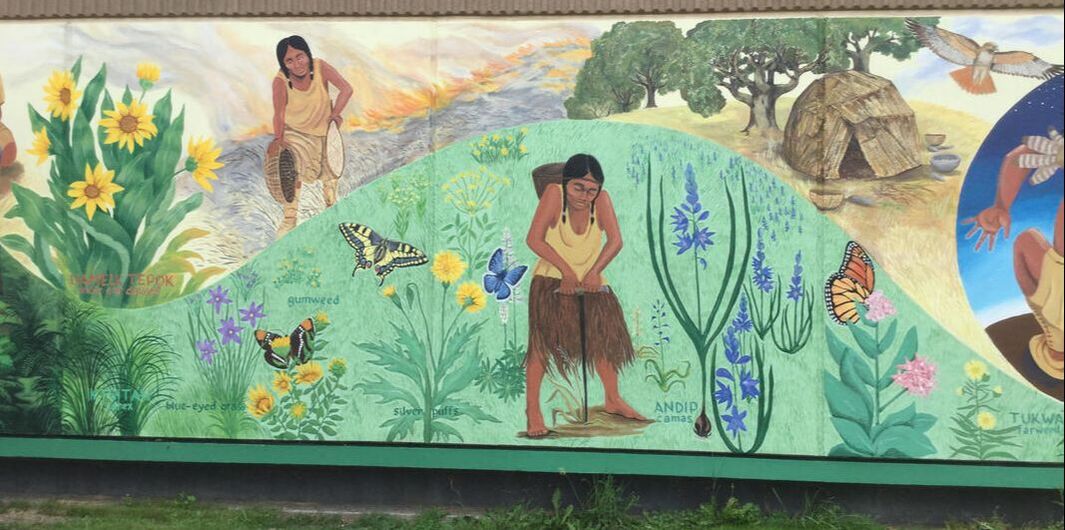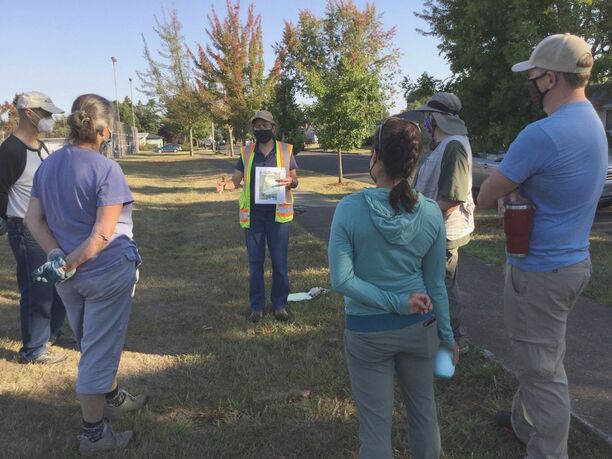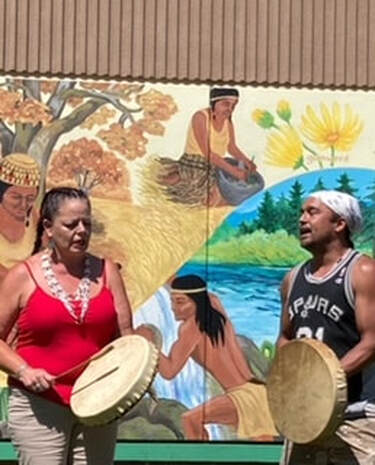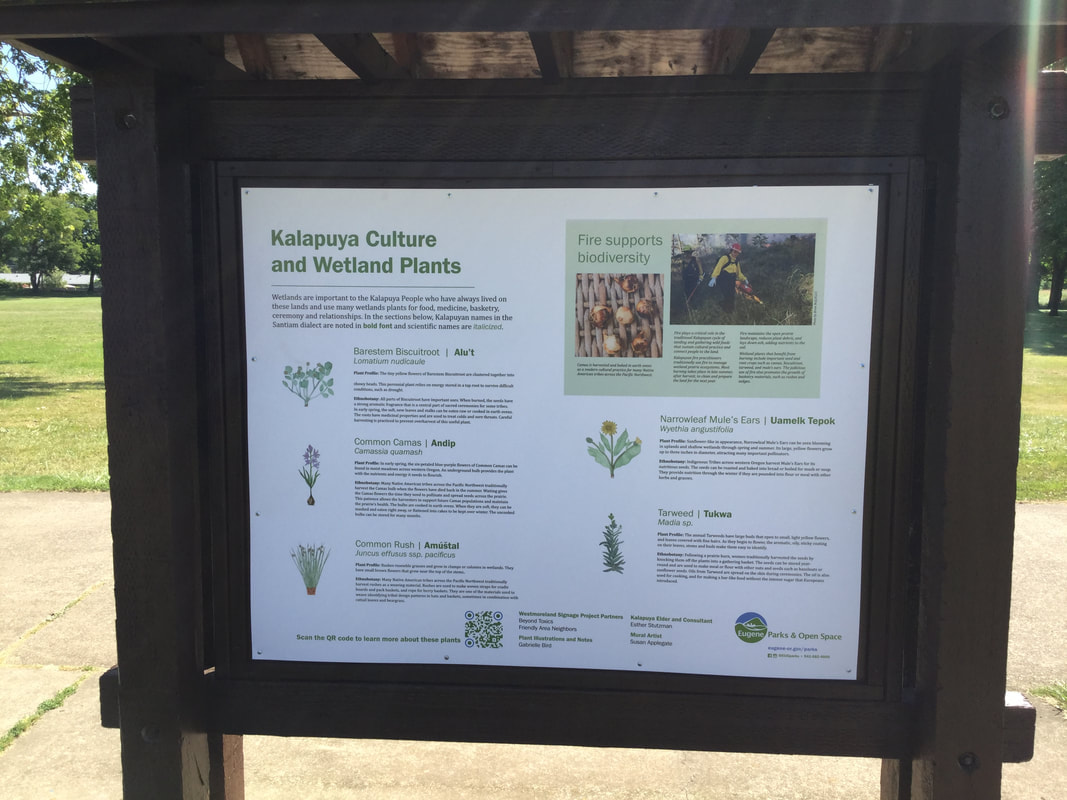Kalapuya Cultural Project and Wetlands PreservationOne area of focus in 2021-2022 was a collaborative project with Beyond Toxics to enhance the wetlands to the east and west of the Dr. Edwin Coleman Jr. Center. These wetlands have significant native plants and are remnants of the large wet prairies that once covered our neighborhood.

Thanks to a City of Eugene Neighborhood Matching Grant, this multi-faceted project includes:
1) The “Willamette Wetlands of the Kalapuya Tribes” mural on the east wall of the Coleman Center, depicting native plants in the wetlands and the uses of these plants by the Kalapuya people. The design features a Kalapuya elder and storyteller sharing cultural history through the seasons and across the generations. Plants are named in English and in Kalapuya, when known. The design was created by muralist Susan Applegate and Kalapuya tribal elder Esther Stutzman and painted by Susan with the assistance of Esteban Camacho Steffensen and community volunteers. View Beyond Toxics' video about the mural. 2) The “Kalapuya Culture and Wetland Plants” informational display on the kiosk by the west wetland featuring some of the significant native plants in the two wetlands, with illustrations and ethnobotanical information. The illustrations were drawn by Beyond Toxics intern Gabrielle Bird and the information reviewed for accuracy Parks & Open Space staff and by Grand Ronde and Siletz tribal members and staff.

3) Enhancement of the east wetland to remove non-native plants and help native plants grow and flourish. Under the coordination of Parks & Open Space Ecologist Diane Steeck, four volunteer work parties were held. Eight FAN neighbors were trained as “citizen scientists” and “adopted” five plots in the wetland that volunteers covered with ground-cloth for 5 months. The monitoring data they collected is helping to determine the next steps in enhancing this wetland. Work parties will be scheduled through 2023. Click here for more information on the wetlands project. 
4) A website created by Beyond Toxics provides extensive information about the project. It includes an Outdoor Education Curriculum developed by Susan Applegate and Esther Stutzman that can be used when viewing the mural.
An Honoring Ceremony was held on July 9, 2022 to celebrate the completion of the project. |

